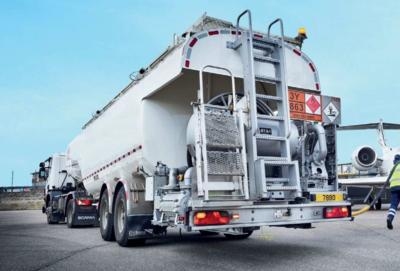Tue, Jan 31, 2023
Sustainable Fuel Production Insufficient to Meet Government Goals by 2030
The NASA administrator has affirmed the Biden admin's support for sustainable aviation fuel, announcing a partnership with Boeing to create a single-aisle, SAF-powered aircraft.

The Biden office has set a goal for the US to produce enough SAF to meet 100% of domestic jetA demand by 2050, when emissions from the industry are projected to make up a sizable proportion of the country's carbon emissions after decades of decarbonization in other sectors. Congress aimed to bolster SAF production in its 2022 package with a tax credit of $1.25 per gallon for jet fuel blended with a percentage of SAF, a step in the direction that will likely evolve over time to omit virgin petroleum as a feedstock altogether. The legislation also included $68 million in the fiscal 2023 government spending law to support carbon reduction efforts in the aviation industry, like provisions directing federal agencies to prioritize SAF research and development.
The boom in SAF production has continued to be outpaced now that legislators have begun to pay more attention to it, however. While companies from around the world have ramped up output of sustainable jet fuel, overall production remains somewhat niche and limited in availability, with an average of only 4.5 million gallons produced per year (2021). In order to meet White House goals, that number needs to climb to at least 3 billion gallons over the next 7 years. Take up also needs to improve, as Congress has attempted to solve with its foray into subsidies. Currently, awareness and availability are still low throughout the aviation industry, giving time for manufacturers to test their engines and aircraft on blended SAF and approve the combinations before widespread rollout.
SAF tends to sit at a pretty steep price point compared to standard jetA, like today's average of $9.30/gal SAF to $6.96 jetA in California. Sustainability and eco-friendliness are nice, but most Cost-conscious operators won't spring for an extra $2.34 a gallon for the warm fuzzies alone. Only economies of scale can bring that price down to reach, barring some full-on legal strong arming to strangle kerosene fuels out of the market, however unlikely.
“The lack of sufficient supply [of SAF] is the biggest issue right now,” said Geoff Cooper, president of the Renewable Fuels Association. “There’s some stuff being produced, but it’s a very small volume, and until we get more production facilities up and running, the cost is going to be high.”
More News
Light Gun A handheld directional light signaling device which emits a brilliant narrow beam of white, green, or red light as selected by the tower controller. The color and type of>[...]
“We have performed extensive ground testing by comparing warm up times, full power tethered pulls, and overall temperatures in 100 degree environments against other aircraft >[...]
While Taxiing To Parking The Right Landing Gear Leg Collapsed, Resulting In Substantial Damage Analysis: The pilot made a normal approach with full flaps and landed on the runway. >[...]
From 2014 (YouTube Edition): Exotic Rebuild Reveals Aerial Work Of Art During EAA AirVenture 2014, ANN's Michael Maya Charles took the time to get a history lesson about a great ai>[...]
Also: Project Talon, McFarlane Acquisition, Sky-Tec Service, JPL Earth Helo Tests Bombardier has earned a round of applause from the business aviation community, celebrating the fo>[...]
 ANN's Daily Aero-Term (12.13.25): Light Gun
ANN's Daily Aero-Term (12.13.25): Light Gun Aero-News: Quote of the Day (12.13.25)
Aero-News: Quote of the Day (12.13.25) NTSB Final Report: Gippsland GA-8
NTSB Final Report: Gippsland GA-8 Classic Aero-TV: Historically Unique -- Marlin Horst's Exquisite Fairchild 71
Classic Aero-TV: Historically Unique -- Marlin Horst's Exquisite Fairchild 71 Airborne 12.12.25: Global 8000, Korea Pilot Honors, AV-30 Update
Airborne 12.12.25: Global 8000, Korea Pilot Honors, AV-30 Update



